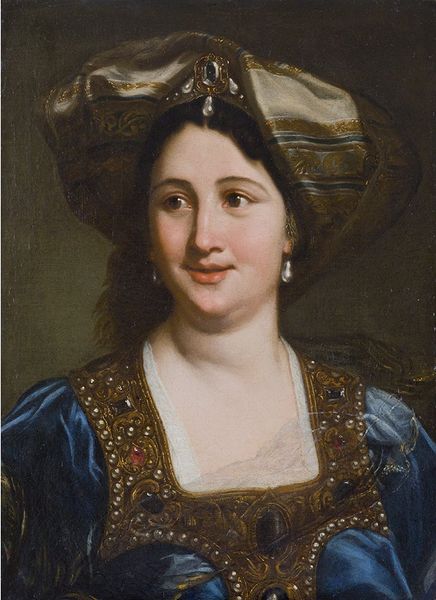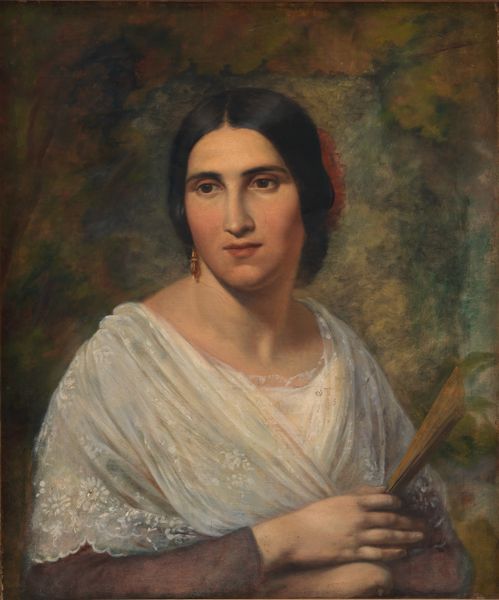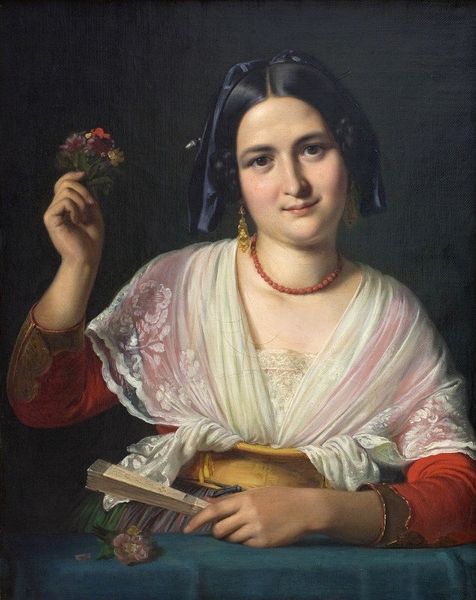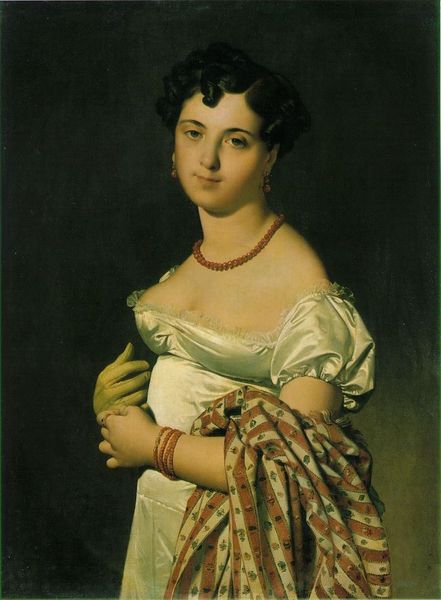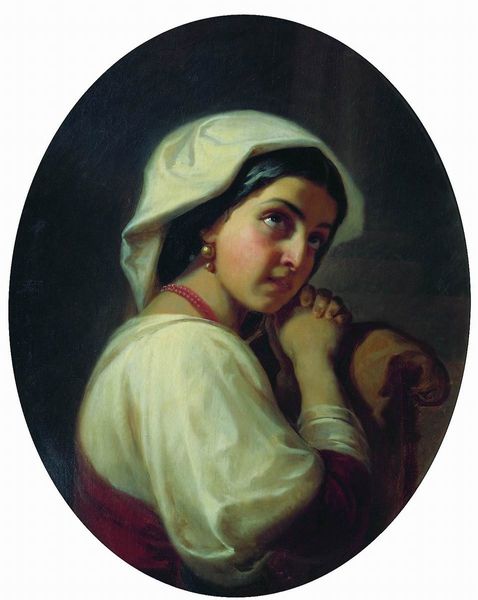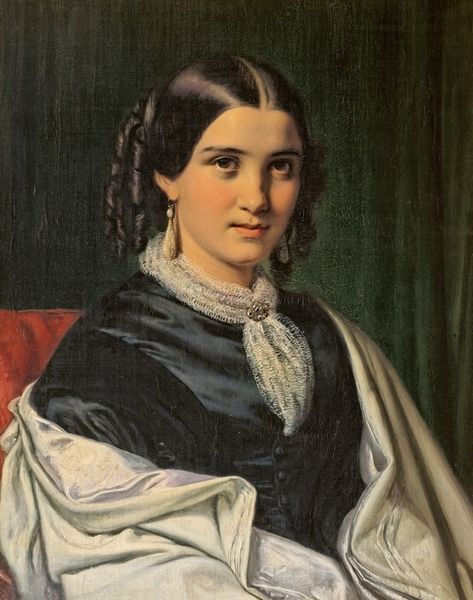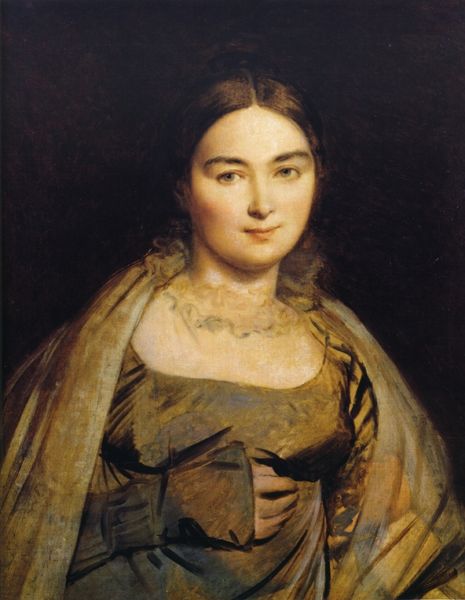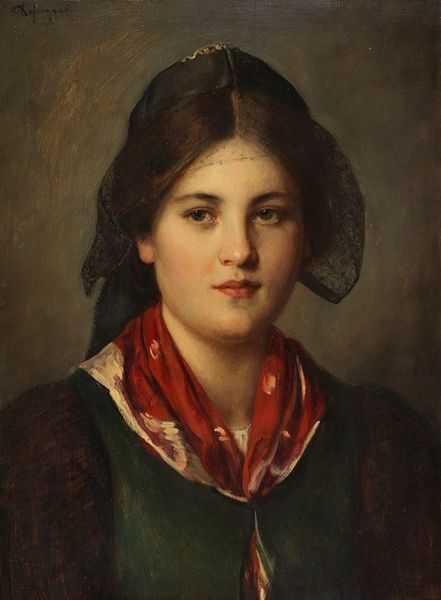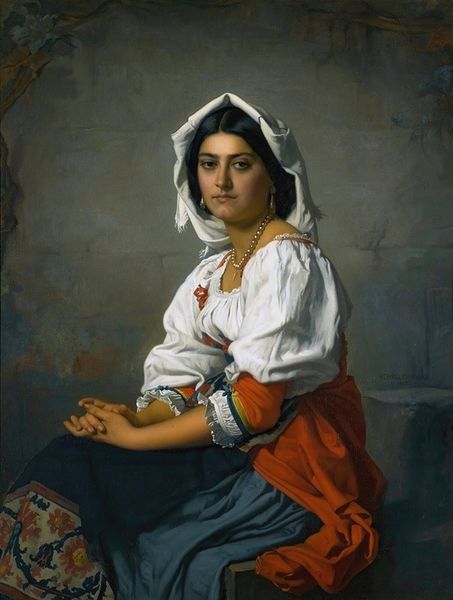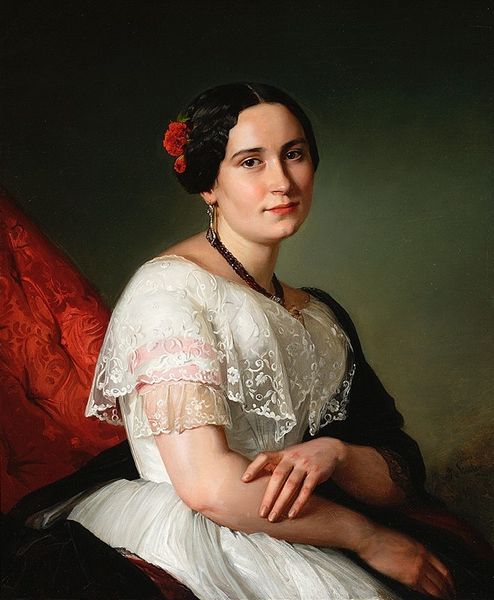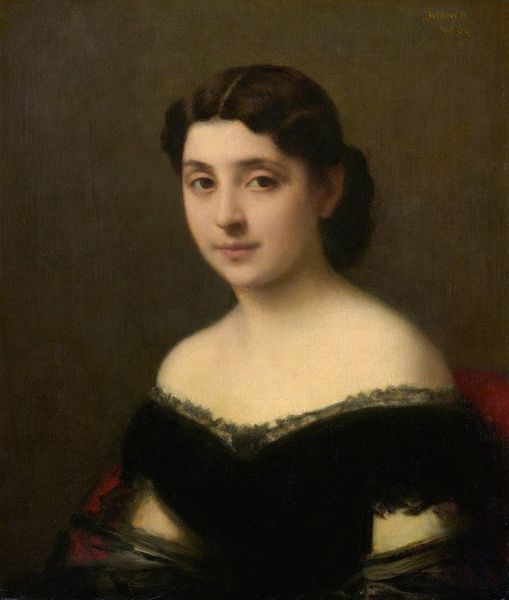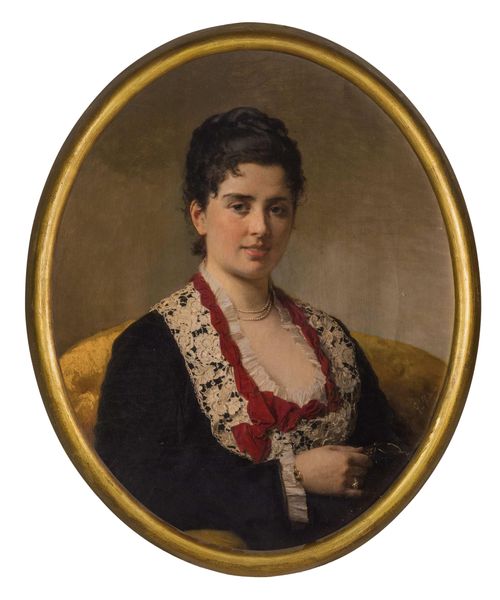
#
portrait
#
portrait
#
portrait reference
#
portrait head and shoulder
#
costume
#
animal drawing portrait
#
portrait drawing
#
facial portrait
#
portrait art
#
female-portraits
#
fine art portrait
#
celebrity portrait
#
digital portrait
Dimensions: 54 x 43 cm
Copyright: Public domain
Curator: Here we have Carl Bloch's "Adele," painted in 1864. It’s a classic head and shoulders portrait. What's your initial take? Editor: I'm struck by her gaze. There's a directness, a self-assuredness that feels uncommon for portraits of women from that era. The artist really captured an individual with depth. Curator: Indeed. It’s oil on canvas, a very traditional medium, of course. But Bloch’s placement of Adele in the composition invites conversation about the prevailing societal structures that governed 19th-century portraiture. How was this portrait received at that time, in light of that woman's gaze? Editor: That’s precisely what captivates me! Usually, women were depicted as objects of beauty, meant for consumption. But here, Adele possesses agency. I wonder about her position in society, her race and ethnicity, her own story that isn't necessarily beholden to the male gaze of art history. How would this portrait interact with narratives of the period's social upheaval? Curator: Bloch was a master of capturing light, something apparent here. But I find myself more drawn to the societal implications that frame the work. The institutional framing of art always dictates our perception of the content, doesn't it? Editor: Absolutely! Think about whose stories get told, which artists get celebrated, and how art becomes entangled with power. And about those lovely small red necklace, earrings, and hair decoration…they suggest identity, background. It also looks like she is wearing an every-day-clothing rather than a specially ordered formal dress for her portrait. Is Bloch trying to represent a real ordinary person rather than just an aristocratic social position? Curator: Yes, I think you make a good point. The choice of this level of details shows Bloch wanted to represent her inner characteristics or maybe social status with dignity rather than grandeur. I wonder whether this challenges art history’s largely sanitized view of portraiture during this period. Editor: The contrast is a valuable approach for seeing these kinds of conventional artwork. I wonder what Adele, our portrayed subject, would think about our ideas! Curator: Food for thought indeed. Bloch certainly offers plenty to consider. Editor: Definitely. I'll leave with a renewed curiosity to learn more about Adele.
Comments
No comments
Be the first to comment and join the conversation on the ultimate creative platform.
